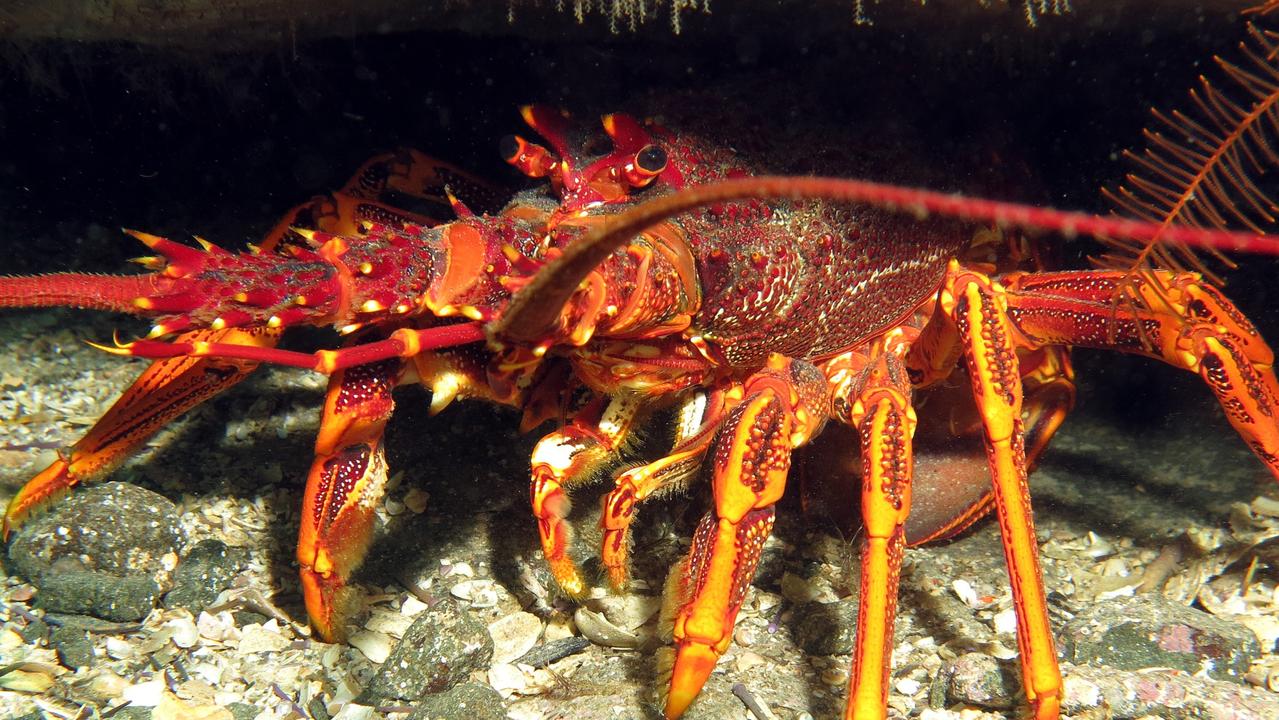Tasmania’s unique geographical location makes it prime for rainbow spotting
Tassie’s four-seasons-in-a-day weather makes it a perfect location for predicting spectacular aerial effects according to a man who has travelled from the other side of the world chasing rainbows.

Lifestyle
Don't miss out on the headlines from Lifestyle. Followed categories will be added to My News.
FEW things in life are as cheerful as a colourful rainbow lighting up a gloomy grey sky.
And while most of us are happy to watch the natural phenomenon unfold spontaneously, others — like photographer Yoav Daniel Bar-Ness — put a lot of thought into when and where a rainbow is likely to appear.
The 41-year-old from Hobart began photographing rainbows about 20 years ago and has been passionate about the pursuit ever since.
Originally from Ohio, in the US, Bar-Ness came to Tasmania as a forest ecology student keen to study the state’s giant trees.
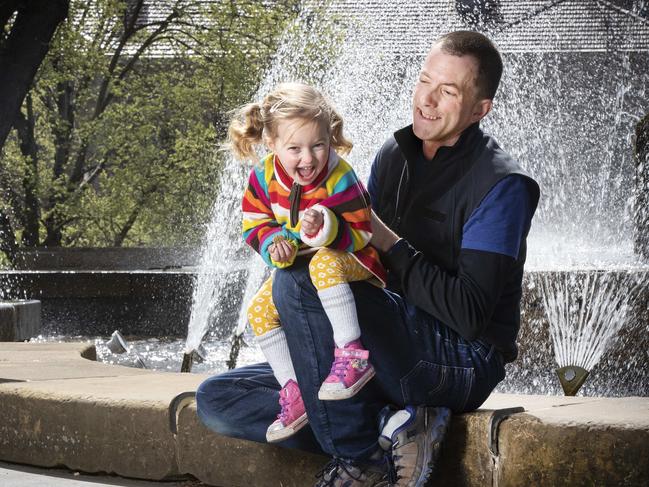
His father was originally from Melbourne, and Bar-Ness had enjoyed several visits to Australia with his family as a child. So he decided to sign up for a research degree in Tasmania, even though he’d never been to the state before.
And while hanging out in forests, he noticed Tasmania seemed to produce many rainbows.
“Once I got here I was hearing people casually saying things along the lines of ‘I saw yet another rainbow today’,’’ Bar-Ness recalls.
“But nobody I had spoken to had actually listed the reasons why we have so many rainbows.’’
He says there are lots of theories about why Tasmania is “one of the world’s premier locations for spotting rainbows’’.
Our four-seasons-in-one-day weather patterns with plenty of rain and mist are an obvious reason, as well as a wealth of rivers and lakes, which are great sources of evaporating water.
Then there’s our mountainous topography — many places where you can look down on a sweeping landscape — and having the horizon below gives you the best perspective to see a rainbow.

We’re also at temperate latitudes, which means we have long and luxurious sunrises and sunsets, unlike tropical regions where the sun quickly dives below the horizon.
We also have a lot of beaches creating sea mist along the East and West coasts, where the sun rises and sets, which also helps with rainbow spotting, Bar-Ness says.
But the most crucial piece of information for Bar-Ness was when he read that a rainbow always appeared at a 42-degree angle to one’s own shadow.
“It became a rewarding game to predict rainbows, instead of just stumbling on them,’’ he says.
He suddenly began noticing rainbows all around him — colours dancing in saltwater waves, colourful lines refracted from cut-glass windows, rainbows on spiderweb dew and in waterfall spray — even fogbows, snowbows and halos around the sun and the moon.
He’s also seen rainbows created by wet dogs shaking off water, in the spray coming off a motorboat and through the window on aeroplanes.
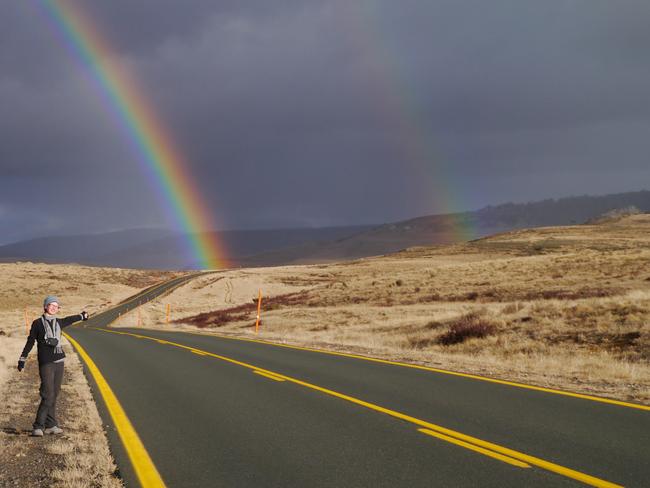
Bar-Ness enjoys the surprise rainbows that the sky presents on rainy days but also enjoys creating rainbows using props like sprinklers or broken CDs.
Even a simple task like filling a water bottle can be an opportunity to watch for rainbows.
“For me, the adventure is about finding them in new situations,’’ he says. “Once you learn to line your eyes up with it, you can find them in surprising places.’’
As the father of three young children, Bar-Ness says hunting for rainbows is a nice activity for his family.
His daughter Sylvia, 2, is particularly captivated by the colourful pursuit and Bar-Ness says with her colourful outfits and cheery disposition she “personifies rainbows”.
He says a lot of people are passionate about photographing spectacular natural wonders like the aurora australis and bioluminescence, but rainbows are appealing because they are accessible to everyone and are easy to see with the naked eye.
“It’s often so serendipitous — it’s the sort of chasing you can do from your porch or your window,’’ he says.
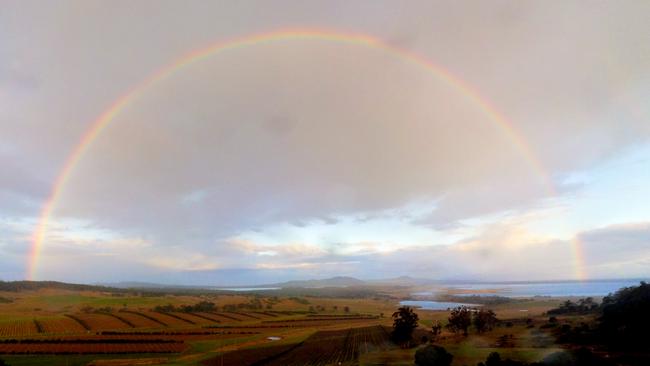
Bar-Ness would love to one day run rainbow-spotting photographic tours.
He already runs giant tree expeditions (giant-trees.com) and is the editor of Tasmanian Geographic.
In the past he’s also been the Tasmanian correspondent for global movement The Cloud Appreciation Society.
Bar-Ness says you’ll never hear anyone say a bad word about rainbows.
“I challenge you to find a single person on the planet who is not happy to see a rainbow,’’ he says with a laugh.
“Everyone is happy to see rainbows.’’
So taking photos of them generates plenty of happiness among those viewing his images.
“I’m consistently fuelled by other people’s enthusiasm for it,’’ he says.
While many people don’t particularly like rainy days, Bar-Ness loves the potential they present.
“I’m always happy to see the rain clouds as they travel away,’’ he says.
“It’s a nice exercise to go out after the rain and look outside for that special moment.
“Part of the magic is that I’m usually able to call it before I see it, and that sustains the enthusiasm.’’
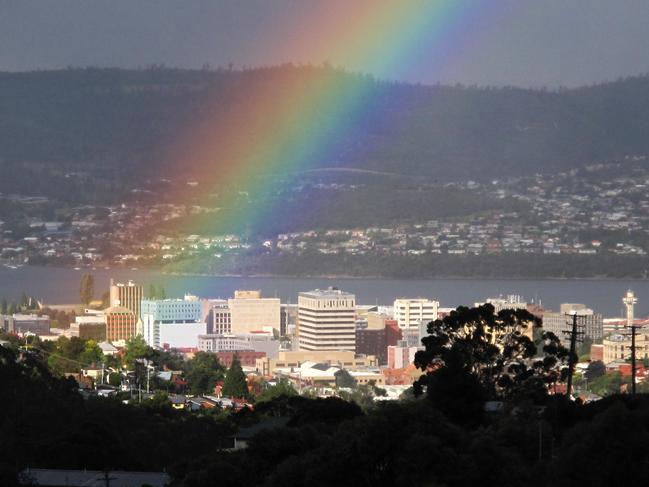
No two rainbows are the same, which can also keep life interesting.
Bar-Ness will often pull over while driving to admire a rainbow, regardless of whether he photographs it or not, just to enjoy the view.
“They’re ephemeral things and they’re not truly captured, they’re just there to be admired,’’ he says.
“A photograph is a poor substitute for taking a moment to appreciate them for what they actually are.’’
●



